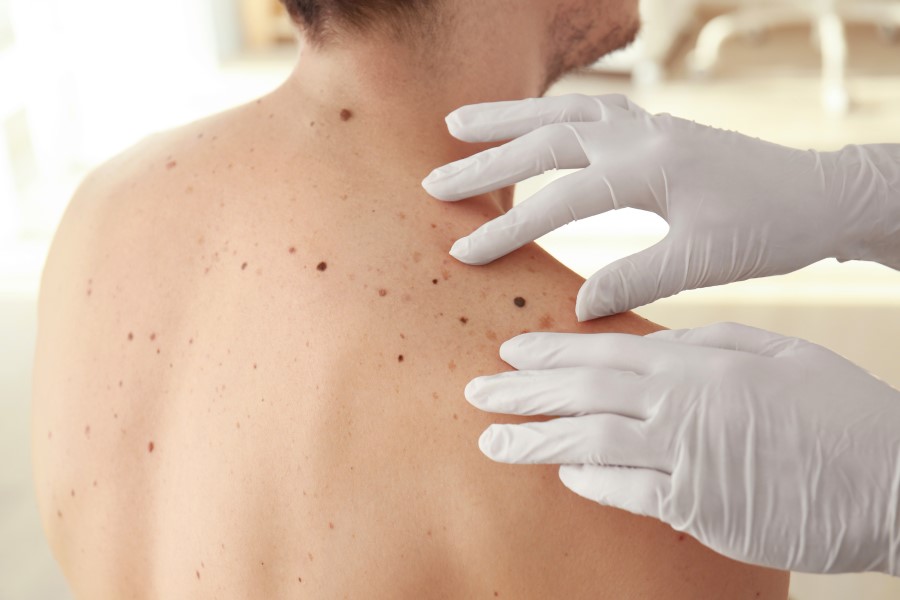Know The ABCDE Rule for Melanoma

The ABCDE rule for melanoma is a helpful guide for knowing when it might be time to talk to your doctor. Here’s how it works.
Melanoma is a type of skin cancer that can occur anywhere on your body. It's not the most common type, but it causes the most skin cancer deaths. And the rate is rising in the U.S.
Being exposed to ultraviolet or UV radiation from the sun's rays, a tanning bed or a sunlamp can damage your skin and put you at risk for melanoma or other types of skin cancer. Avoiding harmful UV light by seeking shade or wearing protecting clothing and using a sunscreen with an SPF of 15 or higher that blocks both UVA and UVB rays, can help prevent your chances of developing melanoma.
However, there are risk factors that you can’t control, such as having:
- Lots of moles, unusual moles, or large moles
- A close family member who has melanoma or has had it in the past
- Fair skin, light-colored eyes, or light-colored hair
- Skin that freckles and burns easily
- A history of lots of sunburns
Use the ABCDE Rule for Melanoma
The ABCDE rule for melanoma is a helpful guide for knowing when it might be time to talk to your doctor. Here’s how it works:A is for asymmetric. Are there any moles with unusual shape?
B is for irregular border. Do any moles have irregular or ragged edges?
C is for color. Do any moles have more than one color?
D is for diameter. Are any moles larger than a pencil eraser?
E is for evolving. Is a mole changing in color, size, or shape or is it new?
If any moles on your body have changed in size or appearance, ask your health care provider to take a look. The ABCDE rule does not work for all melanomas, so it’s important to talk to your health care provider if you have any spots on your skin that are new, changing in size, shape, or color, or are different from all the other spots on your body. Watch Out for Drugs Causing Sun SensitivityWhat Happens With Concerning Skin Spots?
If your health care provider thinks a mole may be a melanoma, you may need a skin biopsy. This means a small piece of the mole must be removed and looked at under a microscope. Melanomas that are found early are easier to treat. If a biopsy shows that you have a melanoma, you and your health care provider will talk about the types of treatment. Surgery is the most common way to treat melanoma and might be the only treatment needed for early-stage melanomas. With surgery, any area that has cancer cells is removed. The type of surgery often depends on the location, size and number of tumors present.- Wide local excision: This is done to remove all the melanoma and some normal tissue around it. The normal tissue is called a surgical margin.
- Sentinel lymph node biopsy: This type of surgery is appropriate if you have a thick melanoma (more than 1 millimeter) or one with features that make it more likely to have spread. It’s usually done at the same time as the wide local excision and removes nearby lymph nodes that are checked in the lab for cancer cells. Results of a sentinel lymph node biopsy help your provider figure out what treatment you may need.
- Lymph node dissection: If lymph nodes near the melanoma are enlarged or if cancer is found in the sentinel node, additional surgery may be needed to remove nearby lymph nodes. This is known as a lymph node dissection and is done to keep the cancer from spreading or coming back.
- Mohs Surgery: This procedure, performed by a specially trained dermatologist or surgeon, involves removing the skin and melanoma in layers. Each layer is then looked at with a microscope. If cancer cells are seen the surgeon removes another layer of skin. This process can take hours and is repeated until a layer shows no signs of cancer.

